Yoga has physical, emotional, and spiritual benefits that can be a natural cure for many ailments. Many people suffer from anxiety and depression in the United States, and the conventional solutions are medication, talk therapy, and sometimes even more extreme methods. All of these treatments work depending on the person, but there are so many other options to try before messing with your brain chemistry.
Antidepressants and other psychotropic medications are not bad, but they are overly prescribed. Often medication is the first choice instead of picking a more natural and gentler option such as yoga, exercise, essential oils, nutritional changes, talk therapy, or meditation to name a few.
As a mental health counselor and a yoga teacher, I have personally seen yoga decrease depression and improve their mood with my students and clients. And over time yoga leads to overall better mental health for individuals who practice yoga regularly.
B.K.S. Iyengar recommends in Light on Yoga the following six yoga postures to alleviate depression.
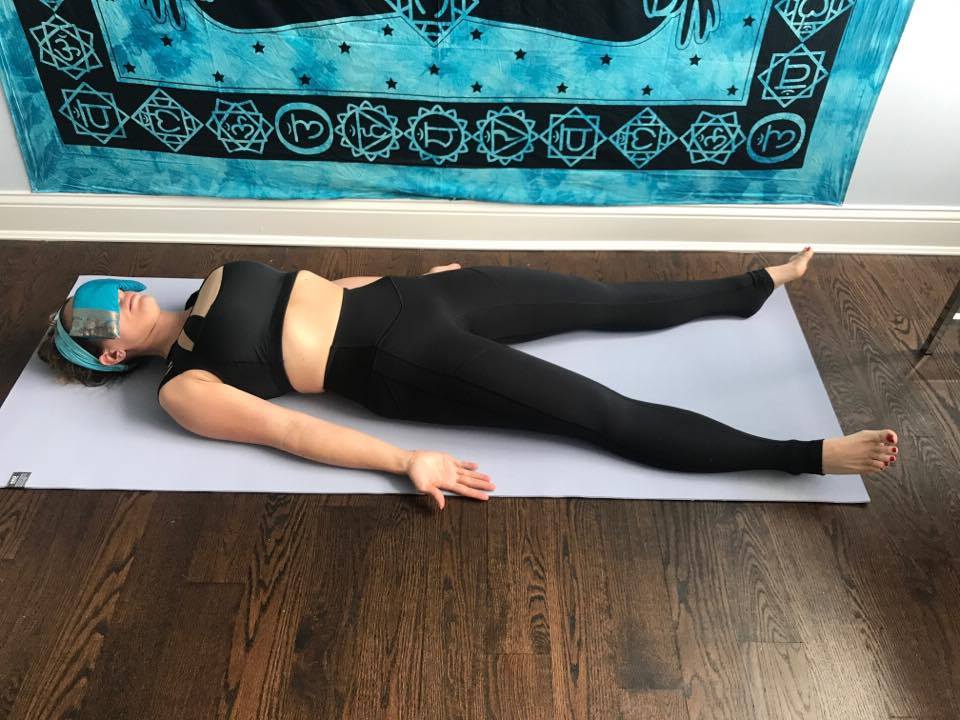
Final Resting or Corpse (Savasana)
Benefits of Corpse Pose (Savasana): Calms the brain and helps relieve stress and mild depression. Also helps alleviate headaches, fatigue, and insomnia. Lowers blood pressure and relaxes the body. Is a very meditative posture that quiets the mind.
How to do Savasana: Lie flat on your back on your mat or a towel and close your eyes. If you have any back, knee, or leg pain try placing a pillow under your knees to alleviate that discomfort. Put your eye pillow, or a hand towel folded a few times over your eyes to block out the light. Focus on your breath inhale for a count of three and exhale for a count of three. Continue this style of breathing for about a minute and then allow your breath to flow naturally. Don’t worry if you have thoughts just allow your body to relax. Another option is to place lavender essential oils on your eye pillow or towel to help you relax.

Forward Fold (Uttanasana)
Benefits of Forward Fold (Uttanasana): Reduces stress, anxiety, depression, and fatigue. Calms the mind and is soothing to nerves. Strengthens thighs and knees. Stretches hips hamstrings, calves and keeps spine strong and flexible.
“Any depression felt in the mind is removed if one holds the pose for two minutes or more.” Light on Yoga, B.K.S. Iyengar
How to do Forward Fold (Uttanasana): Stand with your feet next to each other or up to hip distance apart. To find the maximum distance, place both of your fists between your feet, there should be no extra room. Take a inhale and on your exhale fold your top half over your legs and hang. Some people rest their hands on their legs and others will place their hands on the floor do what feels good to you at that moment.
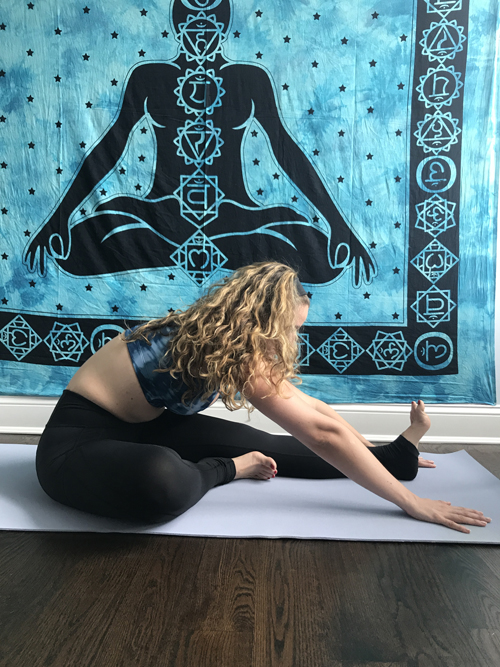
Head-to-Knee Forward Bend (Janu Sirsasana)
Benefits of Head-to-Knee Forward Bend (Janu Sirsasana): Calm the mind, stretch hamstrings and groin, and stimulates the liver and kidneys.
How to do Head-to-Knee Forward Bend (Janu Sirsasana): Sit on your mat with your legs fully extended. Pull one of your legs in to make a figure 4 with your legs. Stretch your arms up to the sky while pushing your hips and bottom to the ground. Hinge at the hips and allow your arms and upper body to fold over your legs. Do this folding posture equally and do not favor leaning over the extended leg. With each exhale sink into the posture a little deeper. Hold for a few minutes on each side.
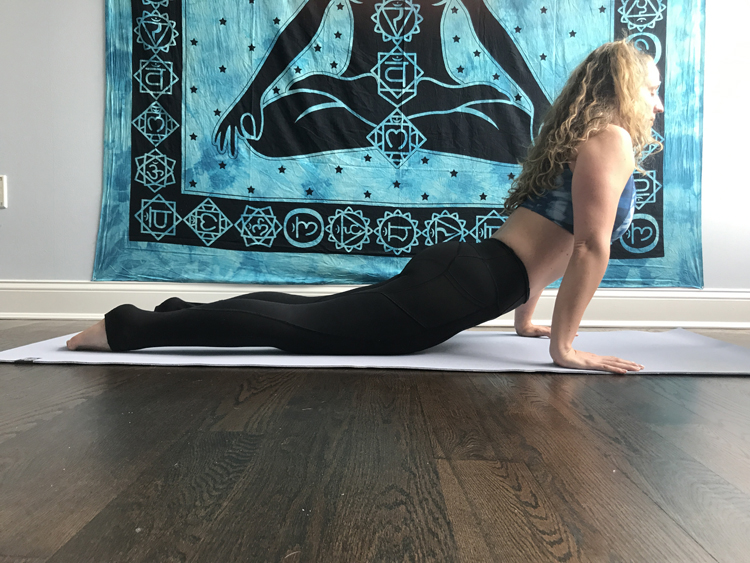
Cobra (Bhujangasana)
Benefits of Cobra (Bhujangasana): Improves mood, regulates irregular menstrual cycle, invigorates the heart, increases flexibility, and decreases stiffness in the back.
How to do Cobra (Bhujangasana): Lie on your belly, place the top of your feet on your mat, and look down towards your mat making sure not to twist your spine or neck. Place your hands under your shoulders with the entire palm on your mat and your fingers spread. Take an inhale and push through your hands lifting your upper body. Press your pelvic area into the mat as you push up. It is recommended to warm up the back with a few baby cobras or cat-cow before going into a full cobra or up dog. Take your time and listen to your body.
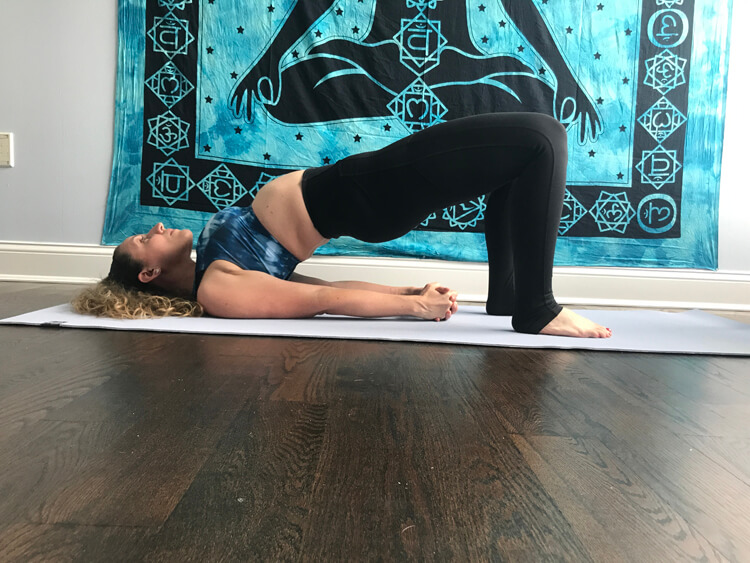
Bridge (Setu Bandha Sarvangasana)
Benefits of Bridge (Setu Bandha Sarvangasana): Strengthens the legs, opens the chest, and stimulates the abdominal organs, lungs, and thyroid.
How to do Bridge (Setu Bandha Sarvangasana): Lying on your back, place your feet on the mat with your knees pointing toward the ceiling. Place your arms by your sides with your fingers pointing towards your feet. You should be able to brush your fingertips on your heels. Make sure your shoulders are fully supported on the ground before pushing up. Slowly start pushing through your feet lifting your hips towards the ceiling. At this point, you could hold the hips in the air or place a yoga block under your hips for a supported pose. To come out of the pose slowly lower your spine vertebrae by vertebrae until you are completely on the ground. Next, extend your legs and stay in Corpse for a few breaths.
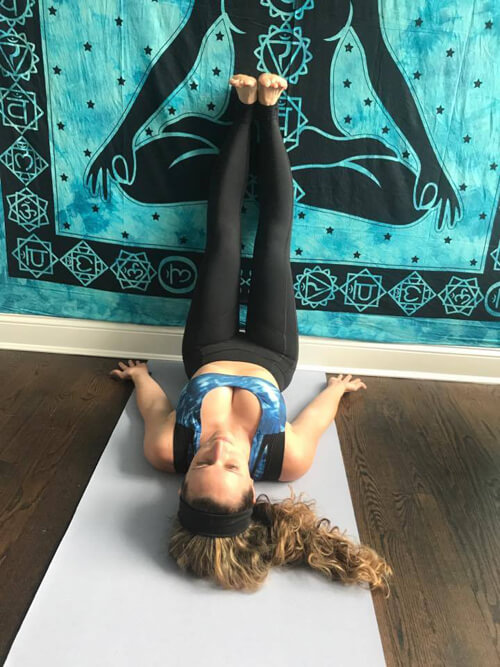
Legs Up The Wall (Viparita Karani)
Benefits of Legs Up The Wall (Viparita Karani): This is the most gentle of inversion postures and my personal favorite. Stretches the back, hamstrings, calves, front torso, and neck. Relieves mild backaches and headaches. Improves problems with ears and eyes. Allows blood to flow out of the feet into the major organs increasing circulation while relaxing legs and feet.
All inversions turn your world upside down giving you a different perspective while giving your brain cells a fresh supply of blood.
How to do Legs Up The Wall (Viparita Karani): Put the short end of your mat against the wall. Sit on your mat with one of your hip against the wall. Swing your legs up the wall as you lie on your back. Your legs can be straight against the wall or with your knees bent. If the posture is too intense, you should move your hips away from the wall. You can stay in this posture for up to 15 minutes.
If you have difficulty relaxing during any restorative posture, try a more vigorous class that makes you exhausted before going into the restorative postures. Trust me it’s harder to think when you’ve been physically working hard.
The physical movement of a yoga practice helps bring you to a more relaxing and present space. Yoga works as a natural medicine for many physical, mental, and emotional conditions including depression, but it is not the only solution and it may not be the right solution for you. All natural treatments, such as yoga, take time to be effective and require a consistent implementation. If you believe you are depressed and have been so for over two weeks, speak with a local mental health professional, who can help you.

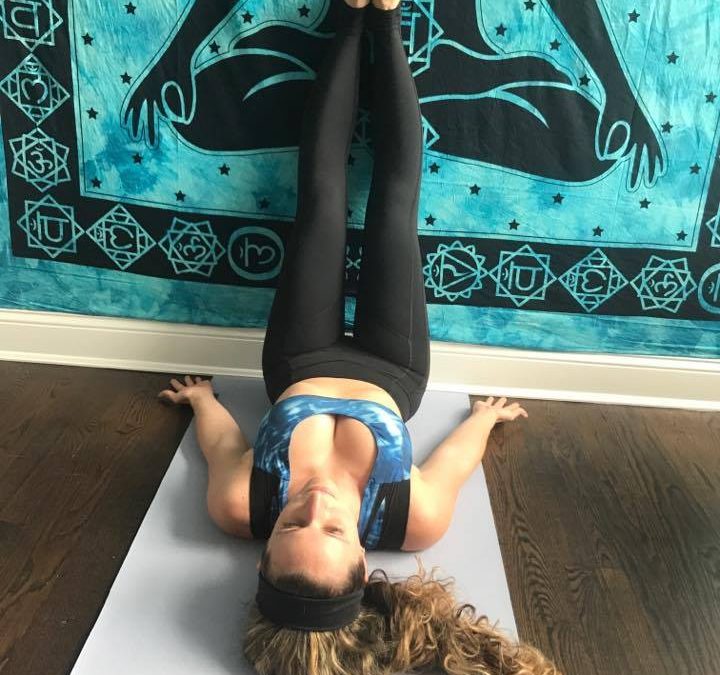
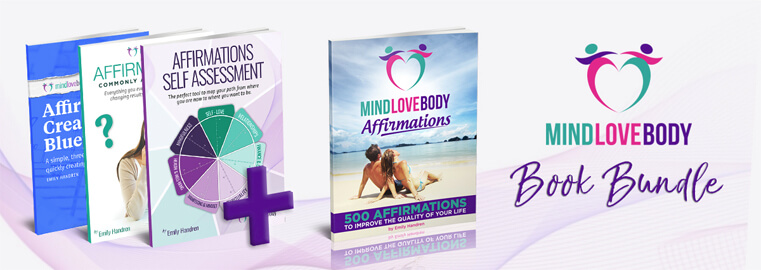

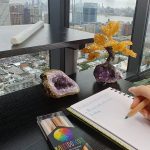

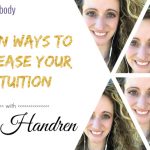


Recent Comments